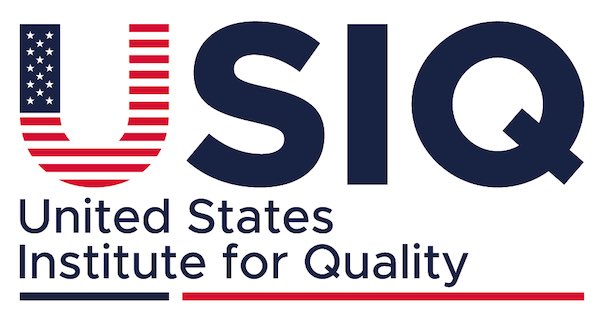Learn How to Recruit Passive Candidates
About 70% of the global workforce are passive job seekers—people who are happy in their current jobs but open to new opportunities. Successfully recruiting these individuals can greatly improve your hiring strategy.
This guide provides practical steps for reaching out to this often-overlooked but key group of workers. Learn how to find, engage, and keep passive candidates interested, improving your recruitment results without resorting to hard selling or overpromising.
Defining Passive Candidates and Their Role in Today’s Workforce
Passive candidates are those who aren’t actively looking for a new job. They’re generally happy with their current position but are open to discussing new opportunities if something particularly interesting comes along.
A striking statistic shows that 87% of all candidates, whether they are currently job hunting or not, are open to new job opportunities. This is different from active candidates, who are the ones actively searching job boards and applying for jobs.
Passive job candidates are a valuable resource for companies looking to fill roles that require specific skills or a lot of experience, which might be harder to find in the pool of active job seekers. These passive candidates are often highly skilled and bring expertise and stability to an organization, making them prized by recruiters.
Crafting Your Passive Recruitment Strategy
Recruiting passive candidates necessitates a strategically designed plan. Here’s a step-by-step plan:
1. Identifying Ideal Candidate Personas

Recruit Passive Candidates
A successful recruitment strategy starts with creating clear profiles for the perfect candidates. These profiles include the necessary skills and experience that the company is looking for. This helps to find and connect with the right people in a way that’s specific to the company’s hiring needs.
It’s important to look for people who have the right qualifications and also to find those who are not actively looking for a new job. The goal is to evaluate candidates based on their skills, career progress, loyalty to their current employer, achievements, and past project involvement.
The aim is to identify individuals who could bring a lot of value to the company over time. These candidate profiles need to be updated regularly to match the changing needs of the business.
Analyzing Market Trends and In-Demand Skills
The strategy moves forward with a detailed review of current market trends and in-demand skills.
Through quantitative methods like surveys and data analysis, combined with qualitative research such as interviews and focus groups, a thorough understanding of the candidate landscape is achieved.
This includes:
- Setting benchmarks for compensation
- Analyzing the competitive environment
- Identifying factors that motivate candidates
- Evaluating the balance between the availability of talent and the market demand
Gathering this information helps in crafting precise candidate profiles by merging insights from various sources, including feedback from staff, industry studies, and employment trends.
A detailed assessment of salary ranges and additional benefits ensures that the offer is not only attractive but also aligns with industry standards.
Leveraging Employee Insights
Insights from current employees are a key part of the recruitment strategy. These team members have a deep understanding of the skills and traits that lead to success within the company. Their input is crucial for identifying what will attract passive candidates.
By involving staff in defining the ideal candidate profiles, the recruitment efforts align with the strengths of the team. Gathering feedback through surveys and discussions helps refine recruitment methods and highlight the most rewarding aspects of their jobs.
2. Sourcing Techniques for Passive Job Seekers

Recruit Candidates
Moving forward from identifying talent is sourcing them. The approach includes:
- Engaging within online communities
- Creating talent pools on social media platforms
- Hosting informative webinars
- Reviewing profiles on social networking sites
Each technique is carefully examined to refine the sourcing process.
Utilizing Advanced Search Tools
Utilizing advanced search tools is essential for locating passive candidates. LinkedIn’s advanced search offers intelligent suggestions that sharpen the search and make contact with potential job seekers in extended networks, broadening the reach.
Boolean search strategies are also employed to refine the search for candidates with specific skill sets. Keywords combined with logical operators like AND, OR, and NOT help pinpoint individuals with the right qualifications for certain roles.
Professional Networking Events
Alongside the above, attending networking events is a key strategy for reaching out to passive candidates. By being present at events related to the industry, even if they are not specifically for recruitment, personal connections can be formed and genuine relationships with potential candidates can be built.
Here’s how to effectively connect with passive candidates:
- Get involved in activities hosted by local business leaders, community groups, schools, and churches to personally introduce the company and make a memorable impression.
- Host special networking events aimed at connecting with these potential candidates.
- Encourage employees to use their personal networks by attending industry events where they can have casual conversations and suggest passive candidates.
These methods help create strong bonds with passive job seekers and increase the chances of recruiting top talent.
Through Social Media Outreach
Having identified our passive candidates, it’s essential to proceed with establishing connections via social media engagement, where 62.3% of the world’s population is active. With strong employer branding, leveraging social media becomes an even more powerful tool to attract and interact with these potential candidates.
Engaging Content Strategies
A strong online presence and engaging content on social media platforms are essential. Building a powerful brand image fosters trust and interactions with passive candidates, increasing the likelihood of them considering a change in their career path.
Sharing employee experiences provides authentic insight into the company culture and values, making a tangible connection with potential hires. Personal accounts in recruitment communications can create an emotional bond with these individuals.
Direct Messaging with Impact
When you contact professionals who aren’t looking for work, it’s important to personalize your approach. Showing that you’re interested in their career and what they’ve accomplished can make your conversation more meaningful.
Here are some tips for writing a message that stands out:
- Use a subject line that grabs attention and makes them curious.
- Write a clear and concise email that gets straight to the point and highlights important details.
- Talk about parts of their work history that are impressive.
- Express genuine excitement about how well they might fit with your company.
- Tell a story in your message that is engaging and encourages a response.
Following these tips can improve your chances of getting a response from passive candidates and might even get them thinking about new job possibilities.
When you talk to people who aren’t actively job hunting, focus on what interests them and their professional achievements. This creates a conversation rather than jumping straight into job offers.
Taking time to build a connection and being patient shows that you respect their current situation. This kind of thoughtful communication can lead to trust and respect in your recruitment conversations.
Nurturing Talent Through Employee Referral Programs
Employee referral programs are a highly effective method for uncovering new talent and bolstering the loyalty of new hires.
These programs are most successful when they offer a variety of rewards that resonate with employees. Research indicates that hires made through referrals are more likely to remain with a company for three years or more—at a rate of 47%, compared to just 14% for those sourced from job boards.
To encourage employees to participate, it’s crucial to communicate the benefits and recognition associated with successful referrals clearly. Providing training to employees on how to identify and recommend candidates who meet job specifications ensures that referrals are well-suited for the company.
The advantages of hiring through employee referrals extend beyond just employee retention. These individuals often exceed performance expectations and assimilate into the company culture more swiftly, underscoring the value of leveraging personal networks in recruitment strategies.
3. Retaining Connections for Future Opportunities

The final step in the recruitment strategy involves nurturing ongoing connections with passive candidates. This is especially critical when they start considering new job opportunities.
Engaging them with regular, personalized updates, industry insights, and discussions about their career goals is essential. Such respectful and non-invasive communication maintains open lines for future engagement.
Leveraging the networks of passive candidates can yield considerable benefits. By fostering positive brand experiences, companies can:
- Generate valuable referrals
- Keep in touch for future vacancies
- Reengage with prior candidates who have since enhanced their skill sets
Implementing this step is not only about building a talent pipeline—it’s also a strategic move that can dramatically decrease recruitment costs, potentially tenfold.
Using Seal of Approvals
In the process of recruiting passive candidates, establishing trust and credibility is paramount. Attaining seals of approval such as “Top Employer“, “Family Friendly Employer” or “World´s Best Employer” from our own organization, USIQ, can significantly bolster these attributes.
These endorsements serve as a testament to your commitment to ethical recruiting standards and quality, consequently increasing the confidence that candidates have in your internal recruitment processes.

